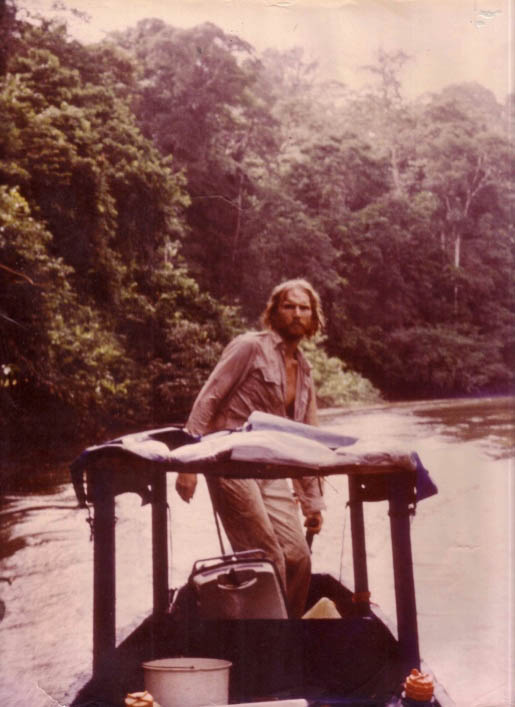
Dr. Marc G.M. van Roosmalen (born June 23, 1947 in Tilburg, The Netherlands) is a Dutch-Brazilian primatologist, botanist, rainforest ecologist, and evolutionary psychologist. He studied biology at the Universities of Utrecht and Amsterdam.
From 1976 – 1979, doctoral fieldwork was conducted in the Central Suriname Nature Reserve on the synecology of all eight primates that occur there and, in particular, on the autecology of the red-faced black spider monkey (Ateles paniscus).
From 1983-1985, he conducted post-doc research in the south of French Guiana on plant-animal relations in seed dispersal and seed/seedling predation ecology of Guianan primary upland rainforest. As a preparation for long-term fieldwork on predominantly fruit-eating primates living up in the canopy, Van R. first compiled the ‘Illustrated Guide to the Fruits of the Guianan Flora’, a catalogue that included all trees and woody climbers known to occur in the northeastern part of South America. The publication of it, in 1985, got him contracted by the Brazilian Government as senior scientist at INPA (National Institute of Amazon Research), Manaus-Amazonas.
From early 1987 on, being based in the very heart of the Amazon, he took on the seemingly impossible (though self-imposed) task to extend his fruit catalogue of the Guayanan Shield flora (describing and depicting about 2,000 fruit species) to a ‘magnum opus’ more than three decades later (here offered for sale as a series of ten eBooks) aimed to cover some 10,000 woody plant species hitherto described from lowland Amazonia.
During his long-lasting and still ongoing fieldwork on the unique biodiversity of the Amazon, his concept of an utterly detailed fruit catalogue turned out to be the best introduction to the rain forest a naturalist could wish for. Taking the author’s pictorial guide to wild fruits along in the field enables even the lay(wo)man to identify whatever local woody flora element in the entire Amazon right at the spot, just with flowers, fruits and/or seeds picked up from the forest floor in hand, all of this without the need of a native tree-climber and a full-fledged botanical library.
In order to understand the basics of Amazonian rainforest ecology, animal behavior, co-evolution, archeology, physical anthropology of ancestral as well as contemporary indigenous peoples, and, moreover, for the solitary human intruder as a means to survive in this utterly complex, potentially dangerous environment, the author has learned that it all comes down to knowing its plants.
This knowledge undoubtedly has led the author to discover at least twenty mammal species new to science, among which the second smallest monkey in the world belonging to a new monotypic genus he named Callibella (Van Roosmalen’s Dwarf Marmoset). On account of his discoveries and efforts to have the hotspots of biodiversity (where he found them) effectively protected, in 2000 the author was awarded one of Time Magazine/Ford Company’s ‘Heroes for the Planet’.
Since 2013, Van Roosmalen has been laying down in writing his lifelong experience, knowledge, philosophical thoughts and theories about natural and human history forthcoming his (often barefoot) walking and sailing across the Amazon – an intellectual legacy he feels obliged to pass on to future generations.
To visit Marc’s author page at Amazon.com go here.
To visit Marc’s website go http://www.marcvanroosmalen.info